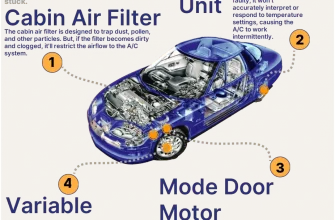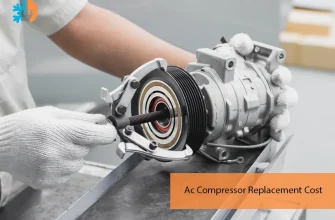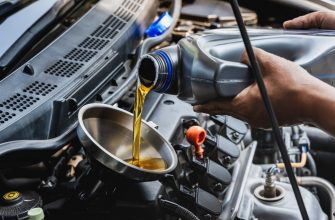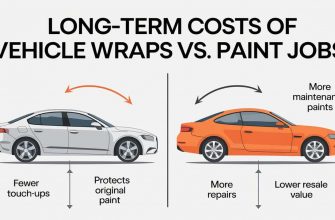Tire Pressure Monitoring Systems (TPMS) are essential components in modern vehicles, designed to enhance safety by monitoring tire pressure in real-time․ This article delves into the appearance and function of TPMS sensors, shedding light on their critical role in vehicle maintenance and safety․
- What is a TPMS Sensor?
- Direct TPMS Sensors
- Indirect TPMS Sensors
- The Function of TPMS Sensors
- How TPMS Sensors Work
- TPMS Sensor Maintenance and Best Practices
- Common Issues with TPMS Sensors
- The Future of TPMS Technology
- Understanding the Importance of TPMS Sensors
- The Safety Net of TPMS
- The Economic Impact of Proper Tire Maintenance
- Technological Advancements in TPMS
- Integration with Smart Technology
- Environmental Considerations
- The Future of Driving: A Connected Experience
What is a TPMS Sensor?
A TPMS sensor is a device that tracks the air pressure within tires, alerting the driver when the pressure falls below a specified threshold․ This is crucial for preventing tire blowouts, improving fuel efficiency, and ensuring optimal vehicle performance․ TPMS sensors can be categorized into two types: direct and indirect․
Direct TPMS Sensors
Direct TPMS sensors are mounted directly on the tire valve stems․ These sensors measure tire pressure using a pressure transducer, sending real-time data to the vehicle’s onboard computer system․ The appearance of a direct TPMS sensor typically includes:
- Compact Design: These sensors are usually small and cylindrical, resembling a valve cap․
- Metal or Plastic Construction: Depending on the manufacturer, direct TPMS sensors can be made of durable plastic or metal materials to withstand harsh environmental conditions․
- Battery Operated: They often include a battery to power the sensor, lasting several years before requiring replacement․
Indirect TPMS Sensors
Indirect TPMS sensors do not measure tire pressure directly․ Instead, they rely on the vehicle’s ABS (Anti-lock Braking System) to detect changes in wheel speed that may indicate a drop in tire pressure․ The appearance of indirect TPMS sensors is less distinct since they are integrated into the vehicle’s existing systems rather than being standalone units․ Key characteristics include:
- Integration: Indirect sensors are built into the vehicle’s control modules, making them less visible and accessible․
- Software-Dependent: These sensors rely on software algorithms to interpret wheel speed data and determine tire pressure status․
The Function of TPMS Sensors
The primary function of TPMS sensors is to ensure optimal tire pressure, which has several benefits:
- Enhanced Safety: Maintaining proper tire pressure reduces the risk of blowouts and improves vehicle handling․
- Fuel Efficiency: Properly inflated tires reduce rolling resistance, leading to better fuel economy․
- Tire Longevity: Consistent monitoring helps extend the life of tires by preventing uneven wear․
How TPMS Sensors Work
TPMS sensors operate by continuously measuring tire pressure and transmitting this information to the vehicle’s dashboard․ When the pressure drops below a predetermined level, a warning light illuminates on the dashboard, alerting the driver to check their tires․ The system also keeps track of pressure changes, allowing for proactive maintenance․
Understanding the appearance and function of TPMS sensors is crucial for any vehicle owner․ These small but mighty components play a significant role in ensuring safety, improving fuel efficiency, and extending the lifespan of tires․ Regular checks and maintenance of your TPMS will not only keep you informed about your tire health but also contribute to a smoother and safer driving experience․
TPMS Sensor Maintenance and Best Practices
To ensure that your TPMS sensors function effectively, regular maintenance is essential․ Here are some best practices to keep in mind:
- Regular Pressure Checks: Even with a functioning TPMS, it’s wise to manually check tire pressure at least once a month․ This habit will help you catch any discrepancies that the TPMS may not immediately report․
- Sensor Battery Replacement: Direct TPMS sensors are battery-operated and typically last between 5 to 10 years․ Keep an eye on the warning light and replace the sensors when necessary to avoid failures․
- Professional Inspections: Have your TPMS checked during routine vehicle maintenance․ Professionals can calibrate the system if needed and ensure that all sensors are functioning correctly․
- Relearn Procedures: If you change or rotate your tires, some vehicles require a relearn procedure for the TPMS to recognize the new positions․ Consult your vehicle’s manual for specific instructions․
Common Issues with TPMS Sensors
While TPMS sensors are generally reliable, certain issues can arise․ Understanding these can help you address problems quickly:
- Faulty Sensors: Over time, sensors can become damaged or corroded, leading to failure in reporting accurate tire pressure․
- Interference: Wireless signals from other devices can sometimes interfere with TPMS communication, causing false alerts or failures to notify․
- Temperature Effects: Tire pressure can change with temperature fluctuations․ A drop in temperature often leads to lower tire pressure, which might trigger a warning light․
- Improper Installation: If sensors are not installed correctly, they may not function as intended․ Always ensure that TPMS sensors are fitted by trained professionals․
The Future of TPMS Technology
As automotive technology continues to evolve, so too does the TPMS․ Future advancements may include:
- Integration with Advanced Driver Assistance Systems (ADAS): TPMS could become more interconnected with other safety systems, providing a more comprehensive view of vehicle health․
- Self-Inflating Tires: Innovations in tire design may lead to self-inflating tires that automatically adjust pressure, making TPMS even more effective․
- Mobile Connectivity: Future TPMS systems might allow drivers to check tire pressure via a smartphone app, giving real-time updates and alerts at their fingertips․
By staying informed and vigilant about your vehicle’s tire pressure, you can ensure a smoother ride, improve fuel efficiency, and most importantly, keep you and your passengers safe․
Understanding the Importance of TPMS Sensors
As the automotive industry shifts towards smarter, more efficient technologies, the role of Tire Pressure Monitoring Systems (TPMS) has become increasingly significant․ These sensors are not merely accessories; they are vital components of modern vehicle safety systems, enhancing both driver awareness and vehicle performance․ With the integration of TPMS into the broader framework of vehicle technology, understanding their functionality becomes paramount;
The Safety Net of TPMS
One of the most critical functions of TPMS is ensuring the safety of drivers and passengers․ Under-inflated tires can lead to dangerous situations, including loss of control and increased stopping distances․ By providing real-time data, TPMS helps mitigate these risks, allowing drivers to make informed decisions about their tire health․ Regular alerts serve as reminders to check tire pressure, promoting proactive vehicle maintenance․
The Economic Impact of Proper Tire Maintenance
From an economic standpoint, maintaining the correct tire pressure can lead to significant savings․ According to the U․S․ Department of Energy, under-inflated tires can decrease fuel efficiency by up to 3%․ With fuel prices fluctuating, ensuring your tires are properly inflated translates to tangible savings at the pump․ Additionally, properly maintained tires experience less wear and tear, extending their lifecycle and reducing the frequency of replacements․
Technological Advancements in TPMS
The evolution of TPMS technology is not just about monitoring tire pressure; it’s about integrating this information into a comprehensive vehicle management system․ Innovations such as vehicle-to-vehicle (V2V) communication could allow TPMS data to be shared among vehicles, enhancing overall road safety․ Imagine a scenario where a vehicle can alert others of potential tire issues ahead, creating a network of awareness․
Integration with Smart Technology
With the rise of smart devices, future TPMS systems may incorporate features that connect directly to smartphones․ This integration could empower drivers with customizable alerts and detailed analytics about tire performance over time․ Such advancements would not only enhance convenience but also enable better decision-making regarding tire maintenance and replacement․
Environmental Considerations
In an era where sustainability is at the forefront of many industries, TPMS contributes to environmental conservation․ By promoting fuel efficiency and reducing tire waste through better maintenance practices, TPMS aligns with global efforts to minimize carbon footprints․ Properly inflated tires require less energy to maintain speed, thereby reducing emissions and contributing to cleaner air․
The Future of Driving: A Connected Experience
The future of driving is undoubtedly heading towards a connected experience․ As vehicles become more integrated with technology, the role of TPMS will expand beyond simple monitoring․ Expect to see features that allow for predictive maintenance, where the system anticipates tire issues before they become critical․ This proactive approach to vehicle maintenance could revolutionize how we think about car care․









Excellent breakdown of TPMS! The safety benefits discussed really emphasize why these systems are essential for modern vehicles.
I found the explanation of how direct TPMS sensors work fascinating! It
Very informative! I appreciate the details about battery operation in direct TPMS sensors. It’s good to know when to expect replacements.
This article highlights the importance of tire pressure monitoring effectively. Understanding indirect sensors was enlightening!
I loved learning about the integration of indirect TPMS sensors into existing systems. It shows how advanced vehicle technology has become!
Great article! The compact design of direct TPMS sensors is impressive. I had no idea they were so small yet so crucial.
This article made me more aware of how vital tire pressure is for fuel efficiency. Thanks for sharing such valuable information!
This article provides a clear and concise overview of TPMS sensors. The differentiation between direct and indirect sensors is particularly helpful!
Fantastic read! The comparison between direct and indirect sensors was very informative, making it easier to understand their functions.